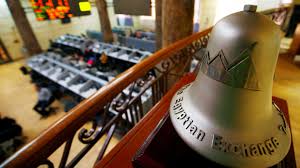SMEs (small and medium-sized enterprises) have always been the focus of the Egyptian state. Suspiciously, the fact that 98 per cent of these projects operate in the informal economy means that there are lost taxes for the government on the one hand and unfair competition for companies operating in the formal economy on the other. Attention was also given to them for being a fundamental reason for providing jobs and a crucial engine of economic development all over the world.
This interest was clearly demonstrated in 2004 when Act No. 141 on SME Development was promulgated, wherein the law provided a wide range of incentives to support these projects financially and technically, under which the Social Fund for Development association was given the responsibility to develop these projects and provide all the services to support them.
However, companies most in need of development have not benefited from the merits provided by the law. The service centres were in the urban areas, especially Cairo and Alexandria, and consequently most of the companies operating in rural areas in Upper Egypt and the tribal areas could not take advantage.
In 2007, a new idea shone for the Egyptian stock market chief. The idea is the first of its kind in the Middle East and is expected to spur growth in SMEs. It is the establishment of a stock exchange specifically for small and medium enterprises specifically as a financing alternative for these projects in order to facilitate their capacity to expand and increase capital, especially given that these projects faced difficulties in obtaining bank financing. Furthermore, for things to go smoothly, the new bourse did not require a certain percentage of net profit other than the original bourse. Thus, the project can obtain unlimited funding without any guarantees.
The performance of the Nile stock exchange has been very modest since its inception in 2007, both in terms of the number of listed companies, which amounted to only 28 until April 2019, or trading volumes, which amounted to an average of EGP 15 million per week. In addition, there are a number of companies whose shares are not traded at all, and the exchange has only witnessed the implementation of one offering over the past three years, ‘MB Engineering’ in 2016. The stock market has also been unable to complete more than one company offering during the last period, most notably that of the ‘Speed Medical’ company, which was the largest offering in the history of the Nile bourse as only 46 per cent of the offering was covered. This gave a negative impression of the Nile stock exchange and the reluctance of investors.
Consequently, the project “began as a small entity and continued to be small” as Mohamed Farid, chairman of the Egyptian Stock Exchange itself, once said. This is because of many configuration problems related to the Nile stock exchange itself on the one hand and the configuration of the Egyptian economy and the status of this category of companies on the other.
First, the problems related to the Nile stock exchange SMEs face difficulty in listing on the Nile stock exchange for many reasons. First of all, the process of listing application papers takes a lot of time. Second, their promotion and marketing activity is weak compared to the main market. Moreover, there is a lack of a clear layout considering the rules of circulation over these companies for all market workers. In addition, most of the listing sponsors, who are supposed to follow up with the company and sponsor it until it is settled in the stock exchange, refrain from sponsoring activities, and focus instead on other activities such as technical and financial consulting.
However, the most prominent and crucial of these problems is the dependence of the Nile stock exchange, at the administrative level, on the main stock exchange. This makes decisions and policies unsuitable for this particular category of companies, because the policies of large companies in the main market are very different from those needed for SMEs listed on the Nile exchange. That’s why many experts have been proposing separating them into an independent stock exchange focusing solely on SMEs due to the specificity of the rules needed for this category of projects.
This has led to the reluctance of investment banks and fund managers to invest in Nile bourse companies as they do not suit their investment policies which focus on large companies in accordance with the legislation governing their work. The service and development fees, imposed by the stock exchange management on these companies in 2009, became a burden as it was retroactive since the date of registration of each company.
Secondly, the problems related to the structure of the Egyptian economy and the situation of small and medium enterprises.
The weak performance of the stock market in general and the Nile stock exchange in particular reflects a number of fundamental problems facing the Egyptian economy which negatively affect investment rates. These problems are, the real-estate rise in prices and unavailability and the interest rate rise in prices which drives Egyptians to deposit their money in banks to take advantage of that rise with zero risk instead of investing in the stock exchange.
The second problem is the government’s crowding out of the private sector in borrowing from the banking sector as the government holds about 70 per cent of bank credit to finance the budget deficit. There is no trained labour either. Moreover, oil prices are too high for the industrial sector to an uncompetitive limit. We must also not forget to mention the stumbling blocks in localities and the tax and customs.
Hence, the majority of SMEs operate in the informal economy, with about 60 per cent of wage earners working in Egypt. According to the owners of these companies, the four main reasons for informal work are saving time and effort, the lack of formal work merits and the desire to avoid paying taxes and insurance. All this limits the ability of these companies to expand production in Egypt.
Consequently, these companies have no incentive to show themselves to the government through listing on the stock exchange, because if they are registered, they will have to pay taxes in addition to the aforementioned constraints without receiving formal employment benefits.
Improving the performance of the Egyptian stock exchange is a joint responsibility of all stakeholders from the stock exchange itself, investment banks, financial clearing, relevant ministries, regulators and NGOs.
This means that the Egyptian stock exchange’s management efforts should be complemented by the efforts of all companies involved in this issue in order to achieve tangible improvement in performance. However, coordination itself is one of Egypt’s chronic problems. Each ministry operates in separate and different paths. So, the performance of the Egyptian bourse is not expected to improve as long as all these entities operate away from each other.
On the other hand, some suggested that the Egyptian stock exchange establish a protocol that requires investors to pump one per cent of their investments in the Nile stock exchange, and 20 per cent for investment banks and funds such as the initiative of financing small and medium enterprises launched by the Central Bank.
However, this idea contradicts the essence of the stock market based on supply and demand wherein investments are automatically directed to distinctive opportunities based on specialised studies and investor perception rather than binding management decisions. So, a key solution can be improving the stock (companies’ shares) available on the Nile stock exchange so as to automatically attract investors to it.
To conclude, as long as the structure of the Egyptian economy is not encouraging official investment, and the stock market suffers from internal weakness, the SMEs will not be able to benefit from the financing opportunities offered by the Nile stock exchange. Thereby, the lives of Egyptians, their living standards and the quality of jobs generated by the economic sector will be affected. As SMEs represent about 98 per cent of the Egyptian economy and employ about 60 per cent of the workforce in Egypt.





Recent Comments